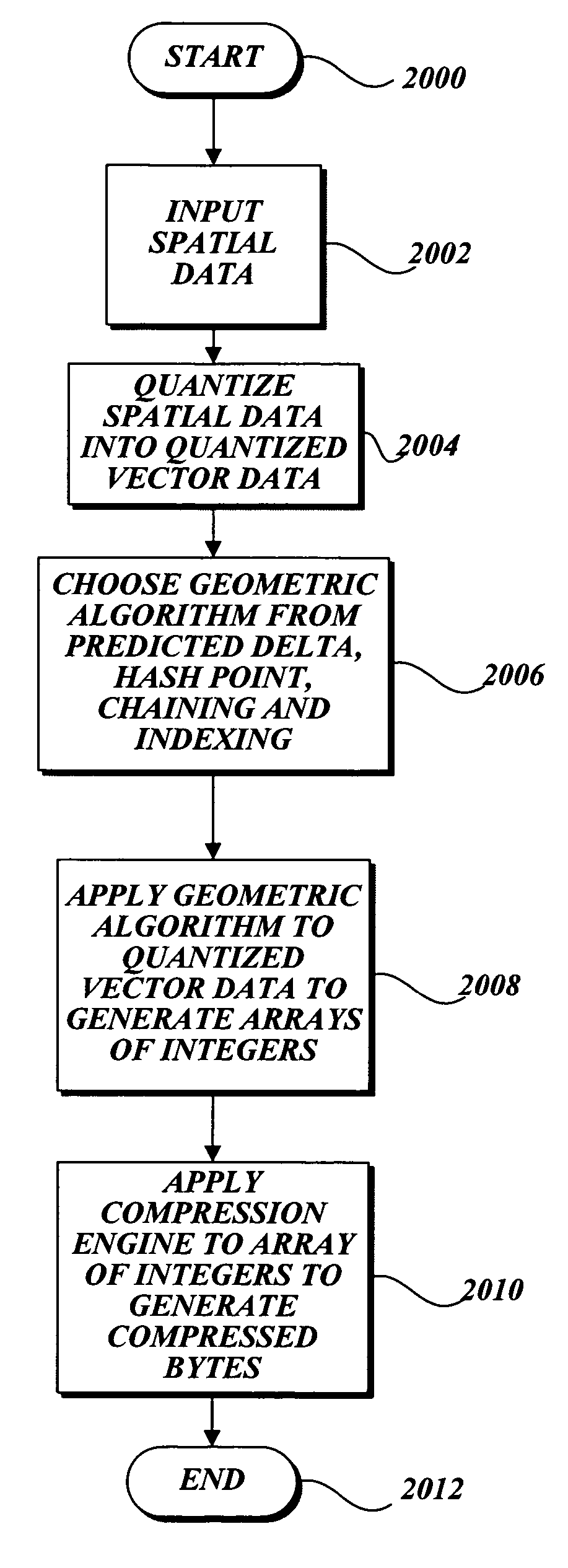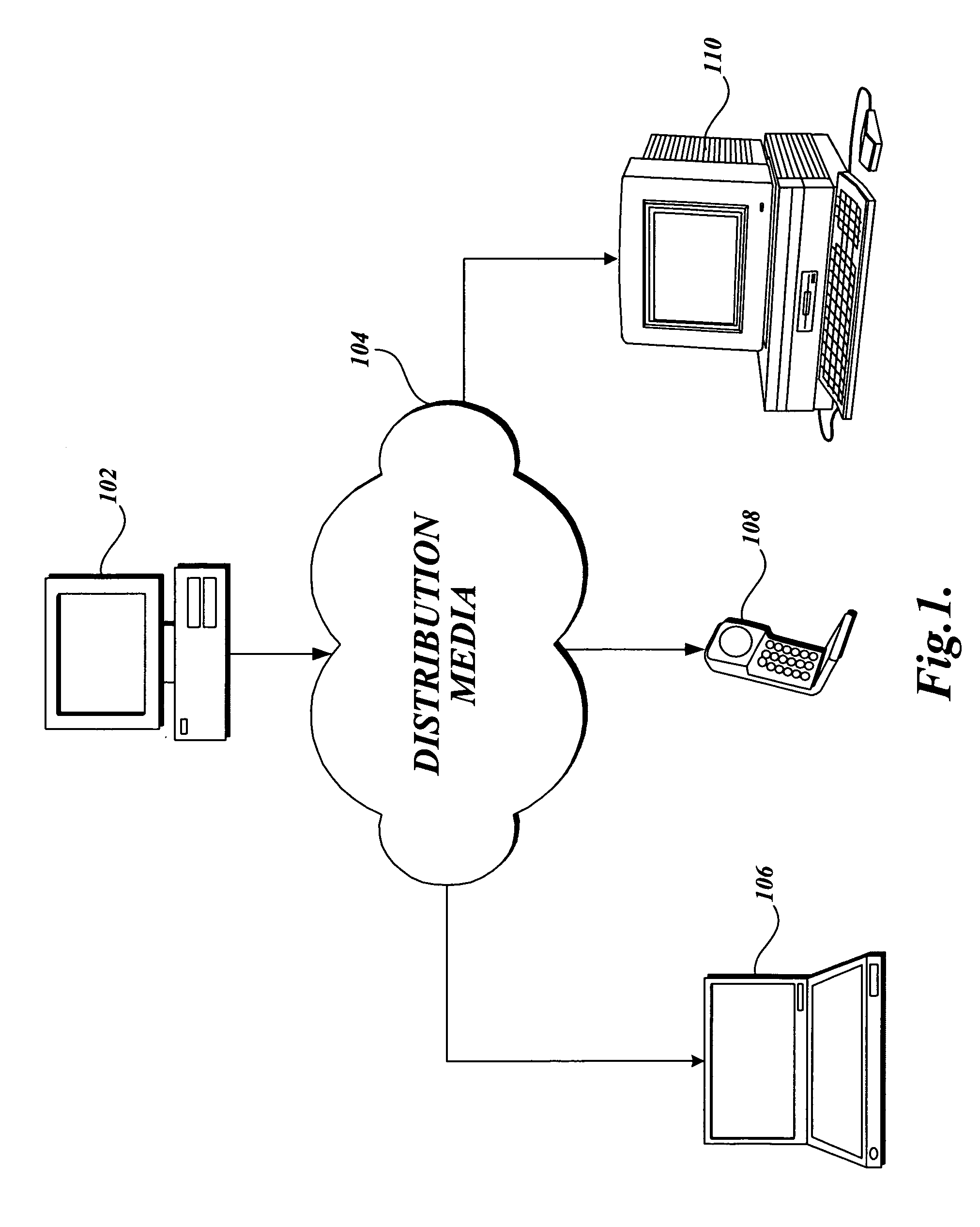Lossless compression algorithms for spatial data
a compression algorithm and spatial data technology, applied in the field of lossless compression algorithms for spatial data, can solve the problems of compressed bytes that require less storage, and achieve the effect of not losing fidelity
- Summary
- Abstract
- Description
- Claims
- Application Information
AI Technical Summary
Benefits of technology
Problems solved by technology
Method used
Image
Examples
Embodiment Construction
[0036]The present invention is related to methods of processing quantized vector data into arrays of integers, requiring less storage than the quantized vector data, and whose integer values are closer to zero than the quantized vector data. Quantized vector data includes “vertices” or points in space expressed as true integer values. The quantized vector data is processed in accordance with the invention to convey the same information as the quantized vector data, only requiring less storage. The present invention accomplishes this by expressing the vertices in integers closer to zero than the integers of the quantized vector data. In the methods according to the invention, quantized vector data is output as arrays of integers, whose values will tend to be small in comparison to the integer values of the quantized vector data. Lower integer values means less storage space is required, due to the nature of the compression engine applied to the output. Additionally, the methods in ac...
PUM
 Login to View More
Login to View More Abstract
Description
Claims
Application Information
 Login to View More
Login to View More - R&D
- Intellectual Property
- Life Sciences
- Materials
- Tech Scout
- Unparalleled Data Quality
- Higher Quality Content
- 60% Fewer Hallucinations
Browse by: Latest US Patents, China's latest patents, Technical Efficacy Thesaurus, Application Domain, Technology Topic, Popular Technical Reports.
© 2025 PatSnap. All rights reserved.Legal|Privacy policy|Modern Slavery Act Transparency Statement|Sitemap|About US| Contact US: help@patsnap.com



